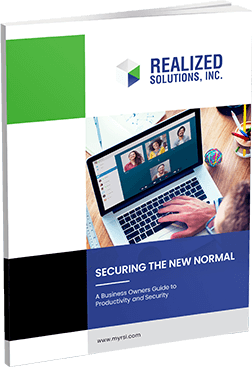As of 2022, 61% of businesses have opted to store their data in the cloud, and that number is only growing. As cloud technology becomes increasingly powerful, businesses that don’t transition will be left behind in the digital age.
Making the switch can seem like an overwhelming process due to the complexity of migrating data between different systems and applications. However, with the right cloud migration services, you can make sure that your business is fully prepared to make the transition. Here is what you need to know about making the transition to the cloud.
The Benefits of Migrating to the Cloud
There’s a reason why 97% of IT leaders intend on expanding their cloud usage—with the right cloud migration services, you can reap several impressive benefits:
- Scalability: The cloud makes it easy to scale up or down depending on the size of your business. You won’t have to worry about outgrowing your current infrastructure and having to purchase additional hardware to keep up with demand.
- Flexibility: Cloud computing offers unprecedented flexibility, allowing businesses to quickly and easily adjust their data needs as they grow. This allows businesses to stay agile and responsive in a rapidly changing market.
- Improved accessibility: Unlike on-premise systems, data stored in the cloud can be accessed from anywhere with an internet connection. This leads to better communication and collaboration within the organization.
- Cost savings: Cloud computing offers cost savings due to reduced IT overhead, as well as the ability to pay only for the resources you need. This makes cloud computing particularly attractive for businesses looking to reduce their IT costs.
- Security: Cloud technology offers security for your data thanks to its use of end-to-end encryption and advanced security measures.
Businesses can greatly improve their efficiency and productivity by taking advantage of these benefits.
When Migrating to the Cloud, Where Do You Start?
So, you’re eager to make the switch, but migrating to the cloud can be daunting. That’s why it’s important to have a strategy in place before you begin. Here are some of the steps you should take when preparing for your cloud migration:
1. Assess Your Current IT Infrastructure
This is an essential step in the process and involves evaluating your existing network infrastructure, applications, data, and security.
2. Identify Suitable Cloud Solutions
Once you’ve assessed your IT infrastructure, you can start researching suitable cloud solutions that can meet the needs of your business.
3. Create a Comprehensive Migration Plan
A well-thought-out migration plan is the key to a successful cloud migration. This plan should include details such as the timeline of the migration, resources required for the move, and any potential risks.
4. Choose the Right Cloud Service Model
Selecting a cloud service model can be tricky. It’s important to evaluate your needs and choose the best option based on scalability, cost savings, security, and other factors.
5. Select a Cloud Provider
After deciding on the cloud service model, you’ll need to select a provider. Research each provider carefully to ensure that they are reliable and able to meet your specific needs.
6. Explore Data Migration Methods
Several data migration methods are available, such as lift and shift, re-platforming, and re-architecting. Selecting the right method is essential for a successful migration.
7. Ensure Data Security
It’s important to maintain data security during the migration process, so make sure your provider is compliant with relevant regulations and that you’re using encryption and access controls.
8. Test and Validate
Once the migration is complete, it’s essential to test and validate the new system to ensure that everything works as expected.
Common Migration Challenges Businesses Face
No matter how thoroughly you prepare, certain challenges can arise during the migration process. Here are some of the common cloud migration challenges businesses face:
Data Transfer Bottlenecks
Transferring data from an on-premise system to the cloud can be a time consuming process, and it’s not uncommon for bottlenecks to occur. To overcome this challenge, you should consider leveraging cloud migration services that can streamline the data transfer process.
Application Compatibility Issues
Certain applications may not be compatible with the cloud environment therefore it’s necessary to evaluate the existing applications and make any adjustments as needed. It’s also important to understand the implications of using legacy applications in a cloud environment.
Keep Your Cloud Secure With Realized Solutions
Migrating to the cloud is becoming increasingly important for businesses of all sizes, and with the right guidance, you can make sure that your business is prepared for a successful transition. At Realized Solutions, we specialize in managing and securing cloud environments for businesses of all sizes.
We offer cloud migration services and other services such as disaster recovery plans, vulnerability assessments, patch management, encryption services, and more—all designed to keep your data secure and compliant with industry regulations. Contact us today to learn how we can help you migrate your business to the cloud and keep it secure.




